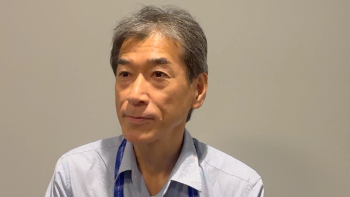
Gene Underexpression Linked With Poor Glioblastoma Prognosis
The underexpression of one of the homeobox (HOX) genes, HOXA11, is associated with poor prognosis in patients with glioblastoma.
The underexpression of one of the homeobox (HOX) genes, HOXA11, is associated with poor prognosis in patients with glioblastoma, according to the results of a small study recently
“Further investigation will be needed to confirm the value of HOXA11 as a potential target for overcoming treatment resistance by developing chemo- or radio-sensitizers,” wrote researchers led by Young-Bem Se, MD, of Seoul National University Hospital in Seoul, Korea.
According to the study, HOX genes are developmental regulators that are expressed temporarily during development and then are typically silenced in the adult brain; however, expression of these genes has been linked with the prognosis of glioblastoma.
For this study, the researchers used microarray analysis to screen the full series of HOX genes in five pairs of initial and recurrent glioblastoma tumor samples. They were looking for the most likely candidate gene responsible for glioblastoma prognosis.
After looking at all 39 HOX genes, underexpression of HOXA11 was identified as a consistent gene associated with a poor prognosis (P = .046).
The researchers then used 20 newly diagnosed glioblastoma samples to validate their findings. Patients with samples with high expression of HOXA11 had a significantly better prognosis than those with low HOXA11 expression (31 months vs 18 months; P = .03), confirming that “the downregulation of HOXA11 is associated with a poor prognosis in glioblastoma patients.”
Next, Se and colleagues wanted to confirm if suppression of HOXA11 affected the efficacy of current standard treatments for glioblastoma. When the researchers suppressed HOXA11 in a group of glioblastoma cell lines, they found that the anticancer effect of radiotherapy and/or temozolomide decreased.
“In addition, this study detected candidate mediators (TGFBR2, CRIM1, TXNIP, DPYSL2, and CRMP1) that may impart treatment resistance after HOXA11 suppression,” the researchers wrote. “These results provide a promising basis for the development of HOXA11 applications that target chemo- or radio-sensitizers in glioblastoma.”
Newsletter
Stay up to date on recent advances in the multidisciplinary approach to cancer.



![According to John Henson, MD, “What we need are better treatments to control the [brain] tumor once it’s detected.”](https://cdn.sanity.io/images/0vv8moc6/cancernetwork/e0d29c38bb732429ae370e4ef7d1829a10c96446-2992x1684.png?w=350&fit=crop&auto=format)














































































